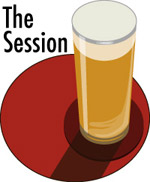Four Innovation Lessons from Anheuser-Busch.
(Thanks to Lager Heads for the, well, heads up).
It’s popular to write that [fill in the name of a large brewing company] could replicate any beer in the world if it really wanted to. But could it? Would its corporate culture let it?
Think of any innovative beer you cherish popular beer of the moment (amended 2.13.2010 to make the conversation about beer rather than marketing terms) — last weekend it might have been Pliny The Younger, this weekend Red Poppy 2010. Think these beers are a result of a “team” getting together, a bunch of test batches, focus groups, middle managers and upper managers signing off on everything?
Or one person, could be a single crazy and could be a few like-minded we-work-together collaborators, saying screwitthiswillbegreat?
 Tom Cizauskas has posted the roundup for
Tom Cizauskas has posted the roundup for